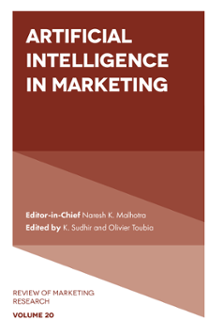
Index
Artificial Intelligence in Marketing
ISBN: 978-1-80262-876-0, eISBN: 978-1-80262-875-3
ISSN: 1548-6435
Publication date: 13 March 2023
Citation
(2023), "Index", Sudhir, K. and Toubia, O. (Ed.) Artificial Intelligence in Marketing (Review of Marketing Research, Vol. 20), Emerald Publishing Limited, Leeds, pp. 309-318. https://doi.org/10.1108/S1548-643520230000020016
Publisher
:Emerald Publishing Limited
Copyright © 2023 K. Sudhir and Olivier Toubia. Published under exclusive licence by Emerald Publishing Limited
INDEX
- Prelims
- The State of AI Research in Marketing: Active, Fertile, and Ready for Explosive Growth
- The Economics of Artificial Intelligence: A Marketing Perspective
- AI and Personalization
- Artificial Intelligence and Pricing
- Leveraging AI for Content Generation: A Customer Equity Perspective
- Artificial Intelligence and User-Generated Data Are Transforming How Firms Come to Understand Customer Needs
- Artificial Intelligence Applications to Customer Feedback Research: A Review
- Natural Language Processing in Marketing
- Marketing Through the Machine's Eyes: Image Analytics and Interpretability
- Deep Learning in Marketing: A Review and Research Agenda
- Anthropomorphism in Artificial Intelligence: A Review of Empirical Work Across Domains and Insights for Future Research
- Index